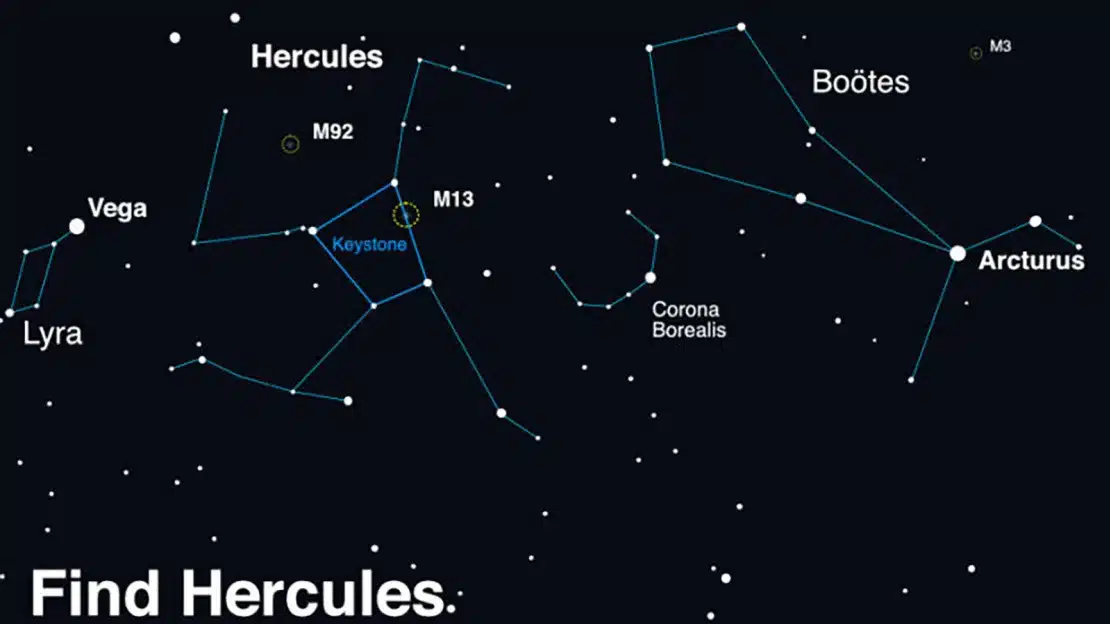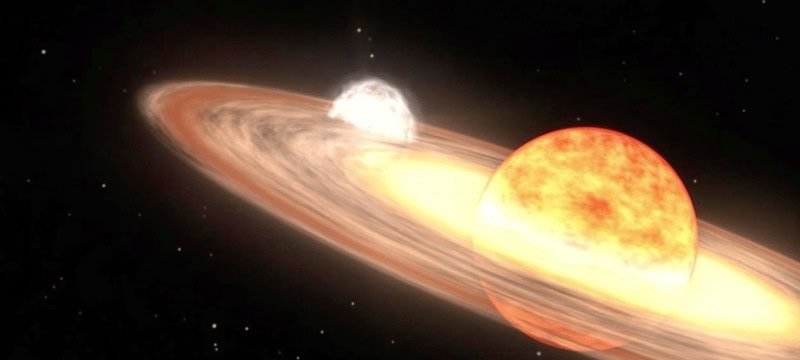Astronomers anticipate a “new star” to become visible in the night sky anytime between now and September, marking the culmination of years of observation, according to NASA.
“This is a once-in-a-lifetime event that will inspire many to become astronomers. It offers young people a unique opportunity to observe a cosmic event, ask questions, and collect data,” stated Dr. Rebekah Hounsell, an assistant research scientist specializing in nova events at NASA’s Goddard Space Flight Center in Greenbelt, Maryland. “It will inspire the next generation of scientists.”
Read more: Eleven Tonnes of Trash Removed from Himalayan Peaks
This anticipated brightening event, known as a nova, will take place in the Milky Way’s Corona Borealis constellation, located between the Boötes and Hercules constellations.
Unlike a supernova, which is the explosive death of a massive star, a nova is a sudden, brief explosion from a white dwarf, a collapsed star. The white dwarf remains intact, releasing material in a repetitive cycle that can last thousands of years.
“There are a few recurrent novae with very short cycles, but typically, we don’t often witness repeated outbursts within a human lifetime, and rarely one this close to our system,” Hounsell said. “It’s incredibly thrilling to have this front-row view.”
T Coronae Borealis, also known as the “Blaze Star,” is a binary system in the Corona Borealis that comprises a white dwarf and an aging red giant. Red giants form when stars deplete their hydrogen supply for nuclear fusion and begin to die. In about 5 to 6 billion years, our sun will become a red giant, expanding and likely evaporating the inner planets of the solar system, though Earth’s fate remains uncertain, according to NASA.
Approximately every 80 years, T Coronae Borealis undergoes an explosive event.
The stars in this binary system are close enough to interact violently. The red giant becomes increasingly unstable over time, shedding its outer layers, which land on the white dwarf.
This transfer of material causes the white dwarf’s atmosphere to heat up until it triggers a “runaway thermonuclear reaction,” resulting in a nova, as illustrated in the animation provided by the space agency.
Observing the Ever-Changing Sky
In the autumn of 1217, during a nova eruption from T Coronae Borealis, a man named Burchard, the abbot of Ursberg, Germany, made note of his sighting of “a faint star that for a time shone with great light,” as reported by NASA. This marked the first recorded observation of the Blaze Star.
The most recent explosive event from T Coronae Borealis occurred in 1946, and astronomers are now vigilantly monitoring the star system once again.
“Most novae occur unexpectedly, without any prior indication,” stated William J. Cooke, lead of the NASA Meteoroid Environments Office, in an email. “However, T Coronae Borealis is among the 10 recurrent novae in the galaxy. Based on the last eruption in 1946, we know that the star will gradually dim for just over a year before rapidly brightening again. T Coronae Borealis began dimming in March of last year, so some researchers anticipate it will go nova sometime between now and September. However, the uncertainty regarding the precise timing of this event spans several months—there’s no better prediction given our current knowledge.”
Situated 3,000 light-years from Earth and usually too faint to be visible to the naked eye, the star system is expected to reach a level of brightness comparable to that of Polaris, also known as the North Star.
Once the nova reaches its peak brightness, it will appear as if a new star has emerged—visible for a few days without any special equipment and for just over a week with binoculars before gradually fading away, only to reappear roughly every 80 years.
The nova will manifest in a small arc between the Boötes and Hercules constellations, and it will be observable from the Northern Hemisphere.

“As per a statement from NASA, ‘The Northern Crown is a horseshoe-shaped curve of stars located to the west of the Hercules constellation, best observed on clear nights. It can be identified by locating the two brightest stars in the Northern Hemisphere — Arcturus and Vega — and tracing a straight line from one to the other. This line will guide skywatchers to Hercules and the Corona Borealis.'”
Global Observations
The upcoming event is anticipated to be an exciting one for amateur astronomers, as stated by Dr. Elizabeth Hays, chief of the Astroparticle Physics Laboratory at NASA Goddard.
“Citizen scientists and space enthusiasts are always on the lookout for strong, bright signals that indicate nova events and other phenomena,” Hays remarked. “Through social media and email, they will quickly send out alerts, signaling the start of observation. We rely on the interaction within the global community once again with T CrB.”
Astronomers will utilize a variety of ground-based and space-based telescopes to observe the nova, and data collected by citizen scientists could assist astronomers in piecing together the events leading up to the eruption, noted Hounsell.
Usually, nova events are so distant and faint that it’s challenging to fully comprehend the eruption, but “this one will be very close, attracting a lot of attention,” Hays added.
“Studying recurrent novae like T Coronae Borealis helps us grasp the mass transfer between stars in these systems and provides insights into the thermonuclear runaway process that occurs on the surface of the white dwarf when the star undergoes a nova,” explained Cooke.
Cooke recalled his experience with the last nova he observed—Nova Cygni in 1975— which had a similar brightness to what is expected from T Coronae Borealis. Nova Cygni is not expected to undergo another explosion.
“I was a teenage astronomy enthusiast about to begin college and happened to be outside on the night of August 29,” Cooke recalled. “Glancing at the sky, I noticed that the constellation of Cygnus looked unusual; there was a star that shouldn’t have been there. After enduring some teasing from friends who thought I was joking, I convinced them to take a look and we realized that we were observing a nova! It was a very memorable experience and reinforced my decision to pursue a career in astronomy. I used to joke that a star had to explode to get me to endure undergraduate physics.”
While it’s possible that T Coronae Borealis won’t explode by September, astronomers intend to monitor it just in case.
“Recurrent novae are unpredictable and often contrary,” remarked Dr. Koji Mukai, an astrophysics researcher at NASA Goddard. “When you think they can’t possibly follow a particular pattern, they do — and as soon as you start to expect them to repeat the same pattern, they deviate completely. We’ll observe how T CrB behaves.”









